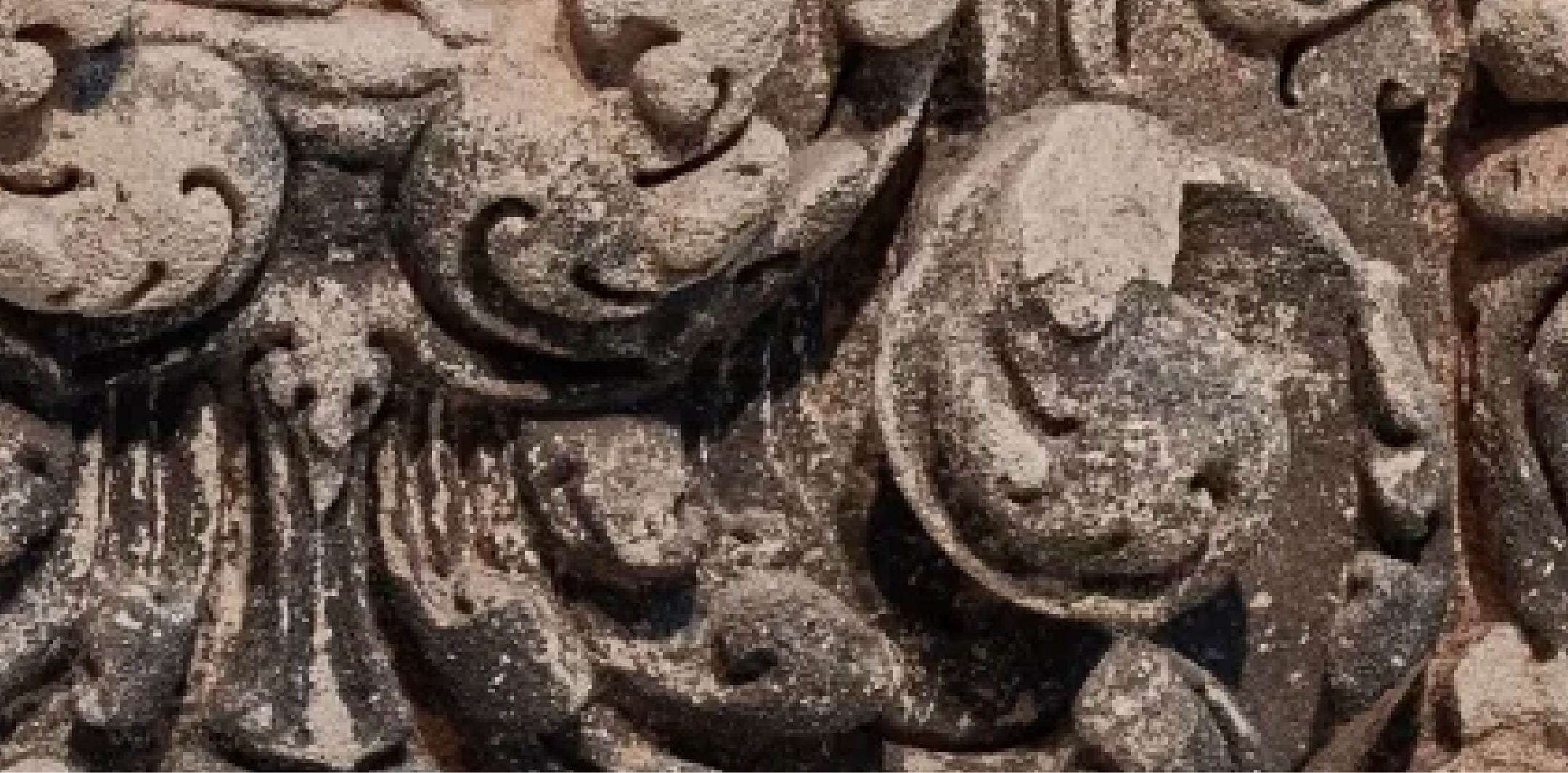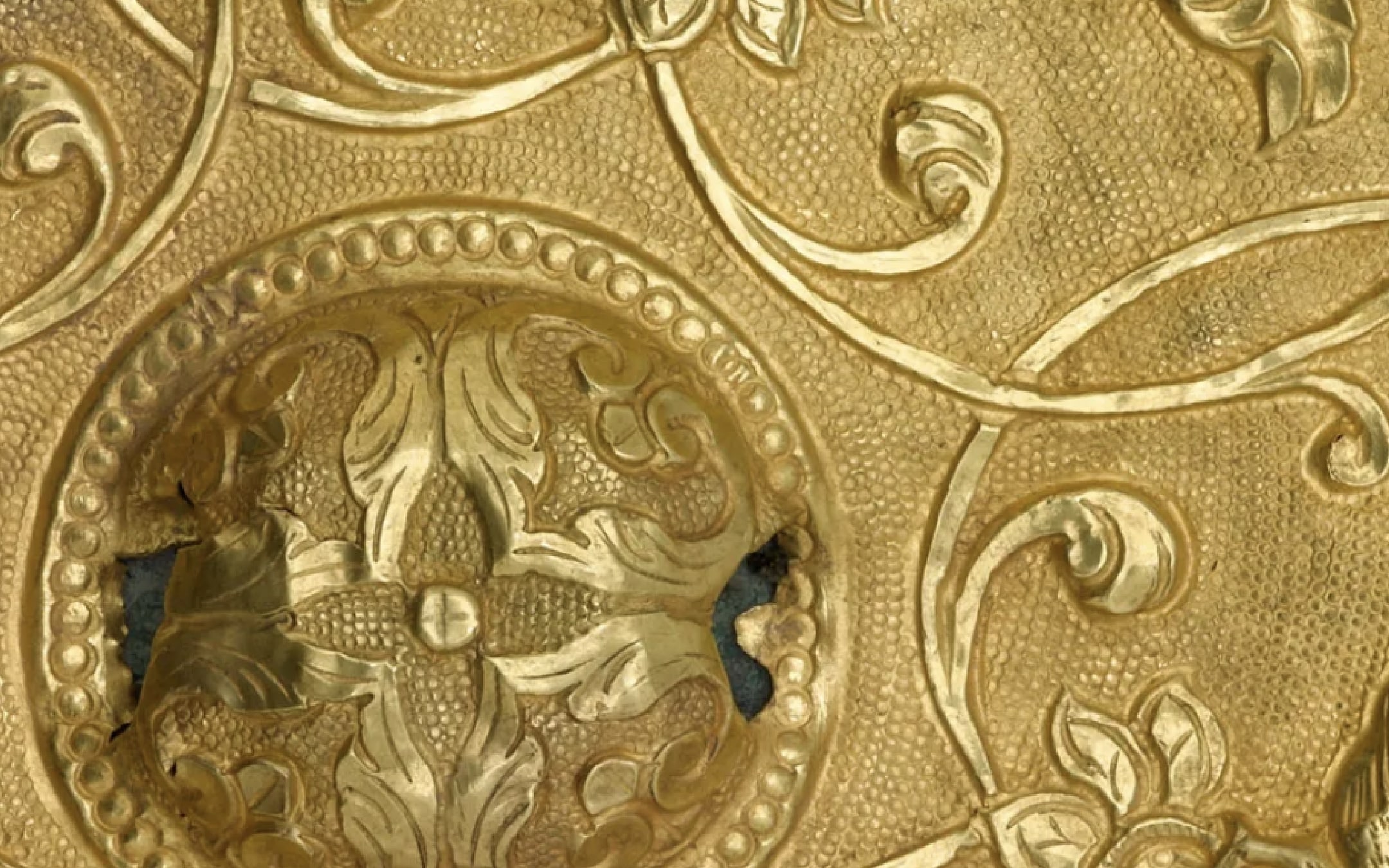Ivy vines, bridges and floating fans 蔦の細道扇面流図屏風

Terms of Use
Creative CommonsAt A Glance
-
Period
early 17th century -
Geography
Japan -
Material
Ink, color, gold, and silver on paper -
Dimension
H x W (each): 170 x 381 cm (66 15/16 x 150 in) -
Accession Number
F1902.102-103 -
EDAN ID
edanmdm:fsg_F1902.102-103
Object Details
-
Artist
Tawaraya Sotatsu 俵屋宗達 (fl. ca. 1600-1643) -
Label
The image of painted fans spilling off from a bridge into a stream evokes the memory of the legendary journey made by a fifteenth-century shogun traveling from the center of Kyoto to an outlying temple. While crossing a bridge, one of the shogun's servants accidentally dropped his master's fan into the rushing water below. Struck by the sudden poignant reminder of beauty's fragility and fleeting nature, all in the shogun's retinue followed suit, casting their fans into the stream.For the literate Japanese viewer, the image of ivy leaves set within long bands of color evoked a passage from the tenth-century collection of lyric episodes, Tales of Ise. In the ninth episode a group traveling to the east from Kyoto encounters an ascetic in a dark and narrow valley filled with ivy. The ascetic is implored by one forlorn traveler to carry back a message to his lady, who is waiting in the capital.This skillful visual union of heretofore unjoined classical subjects in a common theme was a trademark of the seventeenth-century studio of Tawaraya Sotatsu (died circa 1642). In this instance, the two occasions provide ample reflection on the multiple meanings of happenstance. -
Provenance
Sugiyama, Kamaoka, Hyogo prefecture, Japan [1]To 1902Yamanaka & Company, to 1902, purchased from a farmer in Sugiyama [2]From 1902 to 1919Charles Lang Freer (1854-1919), purchased from Yamanaka & Company in 1902 [3]From 1920Freer Gallery of Art, gift of Charles Lang Freer in 1920 [4]Notes:[1] Mr. Yamanaka bought this pair of screens from Mr. Sugiyama, a farmer, living at Kamaoka. See Curatorial Remark #3 in the object record.[2] Undated folder sheet note. See Original Screen List, L. 60, pg. 15, Freer Gallery of Art and Arthur M. Sackler Gallery Archives. The majority of Charles Lang Freer’s purchases from Yamanaka & Company were made at its New York branch. Yamanaka & Company maintained branch offices, at various times, in Boston, Chicago, London, Peking, Shanghai, Osaka, Nara, and Kyoto. During the summer, the company also maintained seasonal locations in Newport, Bar Harbor, and Atlantic City.[3] See note 2.[4] The original deed of Charles Lang Freer's gift was signed in 1906. The collection was received in 1920 upon the completion of the Freer Gallery. -
Collection
Freer Gallery of Art Collection -
Exhibition History
Rinpa Screens (February 25, 2023 to February 24, 2024)Sotatsu: Making Waves (Saturday, October 24, 2015 to Sunday, January 31, 2016)Japanese Screens (March 2007 to January 3, 2016)Japanese Art—Painted Screens (August 18, 1967 to May 2, 1973)Untitled Exhibition, Japanese Screens (October 3, 1947 to November 10, 1955)Japanese Screens, 1923 (May 2, 1923 to April 5, 1933) -
Previous custodian or owner
Sugiyama collectionYamanaka and Co. 山中商会 (1917-1965) (C.L. Freer source)Charles Lang Freer (1854-1919) -
Origin
Japan -
Credit Line
Gift of Charles Lang Freer -
Type
Painting -
Restrictions and Rights
CC0 - Creative Commons (CC0 1.0)
This image is in the public domain (free of copyright restrictions). You can copy, modify, and distribute this work without contacting the Smithsonian. For more information, visit the Smithsonian's Terms of Use page.
The information presented on this website may be revised and updated at any time as ongoing research progresses or as otherwise warranted. Pending any such revisions and updates, information on this site may be incomplete or inaccurate or may contain typographical errors. Neither the Smithsonian nor its regents, officers, employees, or agents make any representations about the accuracy, reliability, completeness, or timeliness of the information on the site. Use this site and the information provided on it subject to your own judgment. The National Museum of Asian Art welcomes information that would augment or clarify the ownership history of objects in their collections.
Keep Exploring
-
Related Resources
-
Date
-
Name
-
Place
-
Topic
-
Culture
-
Object Type

